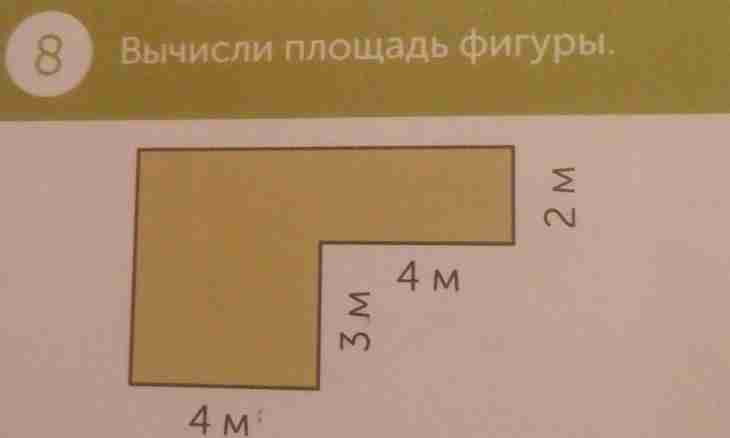In tasks in geometry often it is required to count the area of a flat figure. In tasks on stereometry usually calculate the area of sides. It is quite often necessary to find the area of a figure and in life, for example, when calculating amount of necessary building materials. For determination of the area of the simplest figures there are special formulas. However, if the figure has irregular shape, then to count its area sometimes happens not so simply.
It is required to you
- calculator or computer, ruler, roulette, protractor
Instruction
1. To count the area of a simple figure, use the corresponding mathematical formulas: for calculation of the area of a square, build length of its party in the second degree: The Communist Refoundation Party = with², where: The Communist Refoundation Party is the area of a square, with – length of its party;
2. for finding of the area of a rectangle, multiply lengths of its parties: Party of Pensioners of Russia = d * highway, where: The Party of Pensioners of Russia is the area of a rectangle, d and highway – respectively, its length and width;
3. to learn the area of a parallelogram, increase length of any of its parties by length of height lowered on this party. If dynes of the adjacent parties of a parallelogram and a corner between them are known, then multiply lengths of these parties on a sine of the angle between them: Steam = C1 * B1 = C2 * B2 = C1 * C2 * sinφ, where: Steam - the area parallelogrammas1 and C2 – lengths of the parties of a parallelogram, B1 and B2 – respectively, lengths of heights lowered on them, φ – corner size between the adjacent parties;
4. to find the area of a rhombus, increase length of the party by length to a vysotyiliumnozhta a square of the party of a rhombus on a sine of any to its uglailiperemnozhta of length of its diagonals and divide the received work into two: Promb = With * In = With² * sinφ = D1 * D2, where: Promb – the area of a rhombus, With – length of the party, In – height length, φ – corner size between the adjacent parties, D1 and D2 – lengths of diagonals of a rhombus;
5. to count the area of a triangle, increase length of the party by length of height and divide the received work into two, an iliumnozhta a half of the work of lengths of two parties on a sine of the angle between them, an iliumnozhta poluperimetr a triangle on the radius of an inscribed in a triangle circle, you iliizvlekit a square root from the work of differences of a poluperimetr of a triangle and each of its parties (Heron's formula): Ptr = With * In / 2 = ½ * C1 * C2 * sinφ = p * r = √ (p * (p-C1) * (p-C2) * (p-C3)), where: With and In – length of any party and height lowered on it, C1, C2, C3 – lengths of the parties of a triangle, φ – corner size between the parties (C1, C2), p – poluperimetr a triangle: п = (C1+C2+C3)/2, r – the radius of an inscribed in a triangle circle;
6. to count the area of a trapeze, increase the half-sum of lengths of its bases by height: Ptrap = (C1 + C2) / 2 * In, Ptrap – the area of a trapeze, C1 and C2 – length of the bases, and In – trapeze height length;
7. for calculation of the area of a circle increase a square of its radius by number "пи", approximately equal 3.14: Pkr = π * r², where: р – circle radius, π – number "пи" (3.14).
8. For calculation of the area of more difficult figures, break them into several not crossed simpler figures, find the area of each of them and put the received results. Sometimes it is simpler to count the area of a figure as the difference of the areas of two (or several) simple figures.

